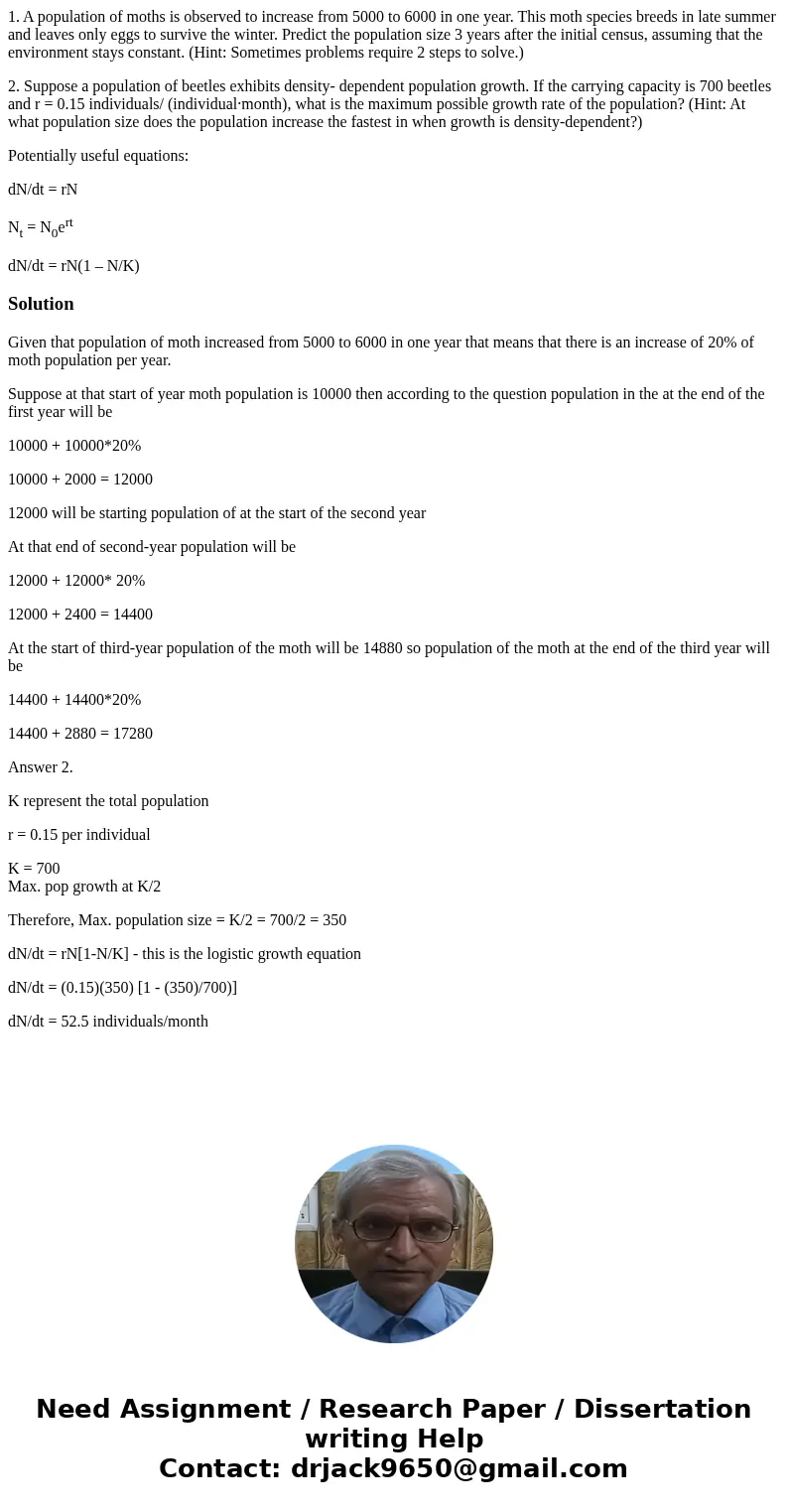1 A population of moths is observed to increase from 5000 to
1. A population of moths is observed to increase from 5000 to 6000 in one year. This moth species breeds in late summer and leaves only eggs to survive the winter. Predict the population size 3 years after the initial census, assuming that the environment stays constant. (Hint: Sometimes problems require 2 steps to solve.)
2. Suppose a population of beetles exhibits density- dependent population growth. If the carrying capacity is 700 beetles and r = 0.15 individuals/ (individual·month), what is the maximum possible growth rate of the population? (Hint: At what population size does the population increase the fastest in when growth is density-dependent?)
Potentially useful equations:
dN/dt = rN
Nt = N0ert
dN/dt = rN(1 – N/K)
Solution
Given that population of moth increased from 5000 to 6000 in one year that means that there is an increase of 20% of moth population per year.
Suppose at that start of year moth population is 10000 then according to the question population in the at the end of the first year will be
10000 + 10000*20%
10000 + 2000 = 12000
12000 will be starting population of at the start of the second year
At that end of second-year population will be
12000 + 12000* 20%
12000 + 2400 = 14400
At the start of third-year population of the moth will be 14880 so population of the moth at the end of the third year will be
14400 + 14400*20%
14400 + 2880 = 17280
Answer 2.
K represent the total population
r = 0.15 per individual
K = 700
Max. pop growth at K/2
Therefore, Max. population size = K/2 = 700/2 = 350
dN/dt = rN[1-N/K] - this is the logistic growth equation
dN/dt = (0.15)(350) [1 - (350)/700)]
dN/dt = 52.5 individuals/month

 Homework Sourse
Homework Sourse